-
Mill Valley Film Festival 45 (Oct. 6-176 2022)
Last edited by Chris Knipp; 11-02-2022 at 09:13 PM.
-
THE ART OF EATING: THE LIFE OF M.F.K. FISHER (Gregory Bezat 2022)
GREGORY BEZAT: THE ART OF EATING: THE LIFE OF M.F.K. FISHER (2022)
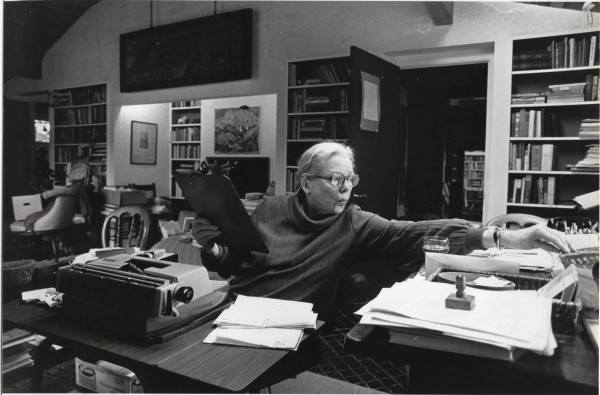
M.F.K. FISHER AT HOME IN CALIFORNIA WRITING
TRAILER
A complicated sensualist
M.F.K. Fisher (1908–1992) is an American food writer, perhaps the greatest one, and she dates from a time when her métier most mattered, because there were so few practicing it. She is the author of 27 books, including a translation of the French classic The Physiology of Taste by Brillat-Savarin. She was praised by W.H. Auden in his introduction to one of her major books, the eponymous Art of Eating, as writing as good prose as anyone in America. She loved food and cooking from the days of her childhood in Whittier, California. She learned more about such things living in France and Switzerland, and through frequent travels, and wrote about them primarily while living in Northern California through a long and sometimes difficult life. much of it spent supporting herself as a single mother. American food was not so good, and it declined further after World War II when many farmers sold out and moved to cities and farms consolidated into factory-like mega-farms. In her beautiful, thoughtful prose, Fisher celebrated the senses and the taste. She made food sexy, and she didn't hesitate to write about sex too, and about life and food and sex as all part of the same thing. Sensitivity to "slow food" and fine food has grown in recent years and the time is ripe for renewed appreciation of M.F.K. Fisher's writing. She got those initials from editors who wanted to mask her being a woman, but - what a great name!
When you learn about who she was, you guess that Joan Reardon’s biography of MFK Fisher, Poet of the Appetites, has a more appropriate title. "Eating" isn't all her life or her writing are about, or all people read her for. Bezat's film fully recognizes this. Using archival film footage of Fisher, her works, and the places where she lived and many interviews with experts and admirers, the film attempts a full and admiring portrait.
But she was a complex writer and person with a complicated life and this film winds up falling short of the je ne sais quoi of a full M.F.K. portrait. It starts off on the wrong foot with a lot of bland blanket praise by a bunch of its talking heads - however distinguished they are in the fields of food and writing, such as novelist and friend Anne Lamott, California superstar restauranteur Alice Waters, and famous restaurant critic Ruth Reichl. They seem to keep butting in, and while they may provide validation (is it needed so much?), they add little to our understanding.
The film also starts off heavy-handedly by quoting from Fisher some relatively ordinary passages where she describes steps in her life, then some of her more generalized words about food and sensuality. The pungency, the specificity, the brilliance and contrariness of her prose, which garnered Auden's lavish praise and others mention, have not gotten pride of place here. We feel some of its subject's complexity slipping through our fingers. We can see why the documentary and the film about Julia Child, that simple blast of enthusiasm (who had a friendly relationship with M.F.K. and spoke highly of her), came across so much more clearly.
The film outlines "Mary Frances'" earliest life clearly enough. Her father bought the local newspaper of Whittier, California, a largely Quaker town (though they were Episcopalians), and she wrote for it while young. She briefly attended a number of local colleges. But she quickly married to be able to go abroad, to Dijon in 1929 with Berkeley doctoral candidate in literature Alfred Fisher (why Dijon we don't learn). This was an opportunity to savor the cuisine of France, to sit in the center of the world, at the Café de Flore in Paris on the Boulevard Saint Germain, to see how the French enjoy eating and life. Then Alfred began to ignore her, and she slipped off with the slim, blond Dillwyn (also known as "Tim") Parrish - in a manner whose sexiness and suddenness is a bit underplayed here. Sadly, Dillwyn, who loved M.F.K., as she loved him, and encouraged her writing as Alfred did not, had Buerger's disease, which required the amputation of a leg and caused rapid decline and terrible pain, and he committed suicide after they had been together for only four years. Then we lose track a bit, interrupted by the endless succession of platitudinous talking heads telling us what a good writer she was, while we're quoted more of her less interesting prose.
It would be nice if anybody gave the dates of the three M.F.K. marriages- they're not even listed in her somewhat inadequate Wikipedia article, which is condemned at the top with the remark, "may be written from a fan's point of view." Graduate student and scholar and Smith teacher Alfred Fisher lasted from 1929 to 1937, painter and illustrator Dillwyn Parrish from 1937-1941, and literary agent Donald Friede merely from 1945 to 1948, when she realized she needed to be alone. She spent her later life with her daughters, and later still, with assistants who helped her write. Toward the end, she struggled with arthritis and Parkinson's, having good and bad body days, and her many ideas for books up until the end much required help from others to carry out.
The film runs its camera over a lot of Fisher's writing, a pleasing if tantalizing innovation, to show how often she appeared in the pages of the much missed Gourmet, in The New Yorker, and in other publications, and hence what a part of the life then she was - and all the books, which from the start garnered praise in the literary columns and were not restricted to style or kitchen sections. We also hear Fisher's own voice, and see her moving and speaking. She had a seven-year contract at Paramount Studios in Hollywood. "I was called a 'junior writer,'" she recounts. "When I was working in Hollywood I was aware that there were men who were absolute nitwits who were producers..." She did what you don't do: she quit after two years. It was then apparently that she translated Brillat-Savarin.
There is much else, but the chronology goes back and forth, and back and forth to Anne Lamott and Alice Waters and Ruth Reichl to hold forth. There is a nice ending moment: a film of Fisher reading from her own work, where she cites a line this reviewer too has long liked: *that Sidney Smith said his idea of heaven was "pâté de fois gras to the sound of trumpets," and she offers a substitute: "fresh garden peas, picked to the sound of a cowbell." She smiles. A wise and pleasant moment, and a nice place to end.
The film, as mentioned, points out how American food, already bland and unsophisticated, deteriorated furtherafter the war, and how in recent decades (to some extent - but while fast food has burgeoned in Europe more and more as well) a sensibility has grown in sympathy with Fisher, with taste, season, farmers, slow food, so she is popular with young foodies. If this film whets their appetites to read her further, it will have done its job.
________________________
*M. F. K., an hourlong documentary by a California filmmaker, Barbara Wornum, released in 1992, was (reportedly) "a comprehensive view of Mrs. Fisher." One would like to compare it with the present film. For a factual review of her life that quotes some really pungent passages see Molly O'Neill's obituary in the New York Times. For more detail see the Wikipedia article, "M.F.K. Fisher." And obviously, we should read her books, starting with the best known ones and moving on from there.
The Art of Eating: The Life of M.F. K Fisher, 85 mins., is having its world premiere at the Mill Valley Film Festival Oct. 11, 2022. Screened in connection with the MVFF.
-
ONE FINE MORNING (Mia Hansen-Løve 2022)
MIA HANSEN-LØVE: ONE FINE MORNING/UN BEAU MATIN (2022)
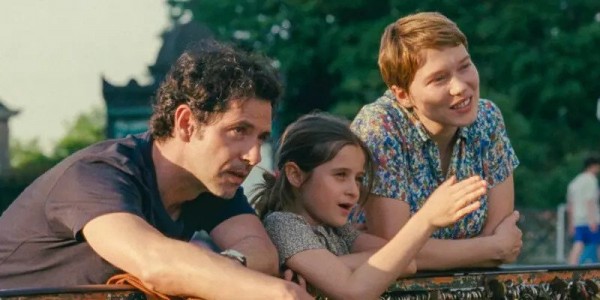
MELVIL POUPAUD, CAMILLE LEBAN MARTINS, LÉA SEYDOUX IN ONE FINE DAY
[Thumbnail review]
Mia Hansen-Løve is in top form here, turning soap-melodrama material into something so rich, intelligent and emotionally direct the result far transcends the genres. Léa Seydoux, dramatically drab, is a lonely widow of five years, a single mom who works as an interpreter and raises a feisty daughter while she and Nicole Garcia, as her mother, her dad's no-nonsense ex-wife, struggle over time to find a decent nursing facility for her philosophy prof father (Pascal Greggory), who has been diagnosed with aneurodegenerative disease. And facing that, she meets unhappily married scientist Melvil Poupaud and a hot affair begins. They both fall passionately in love. Instead of the before-and-after structure of the filmmaker's best films, One Fine Morning drops that neat structural device to honor the intensity of its emotions, plunging into one relatively limited period of time and pushing forward its various threads to a bittersweet conclusion, uncertain, far from perfect, but as good as it can be. A terrific film. This is an intro: a full review will come at US release time.
Last edited by Chris Knipp; 09-22-2022 at 09:37 PM.
-
THE PASSENGERS OF THE NIGHT/LES PASSAGERS DE LA NUIT (Mikhaël Hers 2022)
MIKHAËL HERS: THE PASSENGERS OF THE NIGHT (2022)
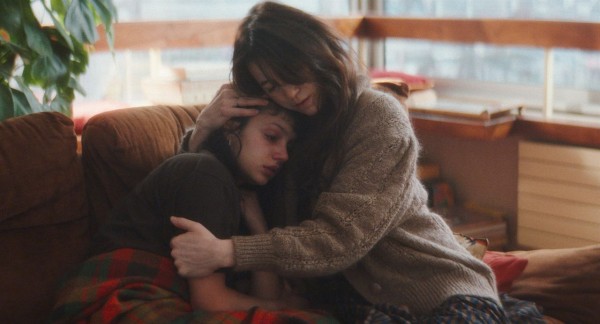
NOÉE ABITA AND CHARLOTTE GAINSBOURG IN THE PASSENGERS OF THE NIGHT
Weeping and wisps of the night
Hers follows Elizabeth (Charlotte Gainsbourg), and her two children, Matthias (Quito Rayon Richter) and Judith (Megan Northam), and a winsome waif called Tallulah (Noée Abita), who Elizabeth picks up at the eponymous nighttime talk show where she works, and who flits in and out of their lives. The time-scheme is a chunk of the 1980's. It starts in 1981 and later picks them up around 1988. Sweet, charming, and touching, this film is impeccably acted. Peter Bradshaw calls Passengers of the Night "a likably unassuming and easygoing movie," and to enjoy it one must not demand too much of it. But it must inevitably play better for the local audience, especially those Parisians for whom the specifically evoked time and place are nostalgic. Otherwise, one is likely to think that not enough happens, and that there is something self-indulgent and repetitious here.
Two problems won't go away for me. One is Charlotte Gainsbourg, with her slightly rough beauty and her voice of breathy sweetness, a big star, really an icon in France, with her joint descent from the legendary singer-songwriter Serge Gainsbourg and the actress-model superstar Jane Birkin. It's impossible to forget for two minutes who she is. If you are a big fan that will presumably be fine. Otherwise, though, it's destructive. The other thing is the jump in time, and using the same young actors for both moments seven years apart. Excellent newcomer Richter may look fine as 22, but then when you think back, he didn't look 15 in the early segments. Nor does either of the other two young people look young enough in the beginning, or enough older in the later ones. Hers is counting on our indulgence on this.
There's a kind of sweet melancholy this film likes to indulge in, and it does it quite well, if you like that kind of thing. French reviewers have been appreciative of the emphasis on "night." Elizabeth is left with the kids in a roomy apartment (with big windows affording a panoramic view of Paris). She's an insomniac. Now she has to get a job. She quickly bombs out of her first due to a lack of a new necessity - computer skills. The late-night call-in talk show helmed by the formidable dame Vanda Dorval (Emmanuelle Béart) turns out to be perfect. Early on, Tallulah turns up, in person, a beautiful homeless girl-child who is helpless, pathetic, irresistible. You may not think her so; the film does.
Noée Abita is a cool actress, but the character of Tallulah in the screenplay by Maud Ameline, Mariette Désert, and Hers is somewhat vaguely conceived. She is sometimes an addict? How does that work? Abita seems more convincing in the later segment when Tallulah has gotten her shit together and can go out on her own. It turns out she's the actress who played the lead in Slalom, (R-V 2021) where she's a teenage ski star with Jérémie Renier as her abusive coach, so there's a natural toughness about her. She's here more for somebody for Elizabeth to show her kindheartedness with and for Matthias to fall in love with in spite of himself. Matthias is a "poet," who isn't very motivated in school. The actor has something distinctive about him.
As happens in small French films the secondary characters are good because good actors come to play them, and Béart is one of the great ones, so her Vanda is very strong, though she only appears now and then. The film is more about weeping and romance. Hence it's important that through her secondary job in a library Elizabeth gets picked up by a gentleman, Hugo, who is taking out a lot of books as a prelude to taking her out. Hugo is played by a very solid, interesting actor, Thibault Vinçon, who years ago played the wicked André Morney in Emmanuel Bourdieu's unforgettable Poison Friends (NYFF 2006). Vinçon has too little to do here, but in his moments he is convincing and strong. There is a mellow father for Elizabeth who comes and goes played by Didier Sandre, who looks right.
Really there is much to like in Passengers of the Night, including the young people's surprise infatuation with Eric Rohmer, by accidentally sneaking into his Les nuits de la pleine lune and being fascinated by the hyper articulate Fabrice Lucchini and the charming, doomed Pascale Ogier. But Gainsbourg is a distraction and so is the time-jump, and you're left with wondering a little bit what happened during this close to two-hour run-time. To enjoy it fully you must buy into its subtle shifts, its delicate emotions, what Marilou Duponchel in the important Paris review Les Inrockuptibles called "l’éclosion sublime de petits riens," "the sublime blossoming of small things." Multiple watches and some knowledge of the French language may be required to tease those out. Or you may wind up feeling as the reviewers for Criticat and Cahiers both do, that Hers is just too leery of dealing with the hard stuff.
The Passengers of the Night/Les Passagers de le Nuit, 111 mins., debuted at Berlin Feb. 2022, showing at a half dozen other international film festivals inclulding Sydney, Taipei Hong Kong, Jerusalem and BFI London. Screened for this review as part of Mill Valley Film Festival, Oct. 6-16, 2022. AlloCiné press rating 4.0 (80%). Metacritic rating: 70%.
Last edited by Chris Knipp; 10-02-2022 at 01:42 AM.
-
PATH OF THE PANTHER (Carlton Ward Jr. 2022)
CARLTON WARD JR.: PATH OF THE PANTHER (2022)
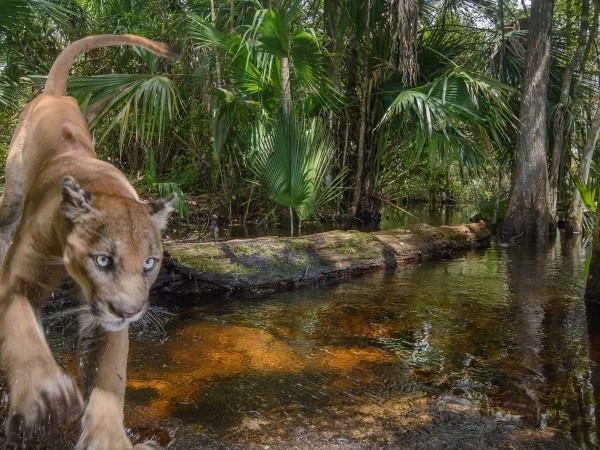
PHOTO CAPTURE BY CARLTON WARD JR. IN PATH OF THE PANTHER
Conservation photog Ward tracks and protects the Florida panther
In Path of the Panther Carlton Ward Jr., a wildlife photographer from a family many generations in Florida who has published a cover story on this subject in National Geographic that previews a coming fifty dollar National Geographic book, describes how veterinarians, ranchers, conservationists, and indigenous people of the southern Everglades are joining forces to track and protect the endangered Florida panther, the last surviving subspecies of puma in the US, and the the Florida Wildlife Corridor in which he can survive. It's an interesting film about the last big cat surviving in the eastern United States, partly because it's so much from the point of view of Ward himself. He works with remote "camera traps" set up to take hundreds, even thousands, of photos, hoping to show the movement of the panthers. The most emotional moments in the film are those of his bitter disappointment when a camera trap has been sabotaged and a month-long setting has borne no fruit, or it has been destroyed by a storm; or his joy when his has captured a female panther with young cubs or a vigorous male leaping high in the air. They are wonderful creatures, and to look into their dyes close up is a hypnotic experience. It is looking into the heart of the wild, the nature we are losing.
Ward is good at showing the involvement of different factions. There is a longtime local ranch family man called Elton Langford who speaks with a deep local patois, a strong ally: his enemy is the same as the panther's, real estate developers, who are both destroying panther habitat and wiping out ranches. Ranchers are as much an endangered species as the elusive, beautiful cats. A Native American speaker woven into this film expresses a similar viewpoint, as well as speaking the language of closeness with the wild, in which the panther was seen by ancestors as an important teacher. In fact as I watched I was reminded of Ale Pritz's excellent documentary The Territory: The
There is an excellent 2019 article by Eric Seeger, one of several in The Nature Conservatory magazine, about the recent history of the Florida panther, his place in US wildlife, and action to protect habitat, which may provide a more complete picture than Ward does in this film. Or at least reading the text made the picture come through more clearly. The advantage of Ward's film is that it's not a dry talking-heads documentary. The good looking Ward is like a movie star of his own film, and when Path of the Panther begins it feels like a feature and not a documentary at all.
The story begins with panthers run down on highways, and one of the threads is of a female with multiple injuries whom a group dedicated to the panther nurse back to health and eventually release back into the wild.
The Nature Conservancy piece mentions that 900 people move into Florida a day, and it shows, as the film does, the sight of suburban developments, masses of close-nested little - or big - houses built by developers on newly acquired former ranch land. Along with this, there are state plans to build new toll roads. A recent plan Ward follows to build three such roads was blocked because the public opposed it. The roads run across panther range territory and cut it into pieces. They also enable the developers to extend their tentacles and continue the paving over of the land. Why these suburban developments work this way, what these people do, the film doesn't go into. One can't help wishing they didn't build sky scraper apartment buildings in cities concentrating people in urban centers and leaving natural and ranch land to nature and the ranchers.
There is much more in Ward's film. A complicated story is of the specifics of the everglades. The Nature Conservatory article explains how the panthers moved into this territory to survive. Now it is becoming filled up with water. Nature is complicated. Path of the Panther is a taste of that which may inspire some viewers to want to know more.
Path of the Panther, 88 mins., is a film from Grizzly Creek Films. It was screened for this review as part of the Oct. 6-16, 2022 Mill Valley Film Festival.
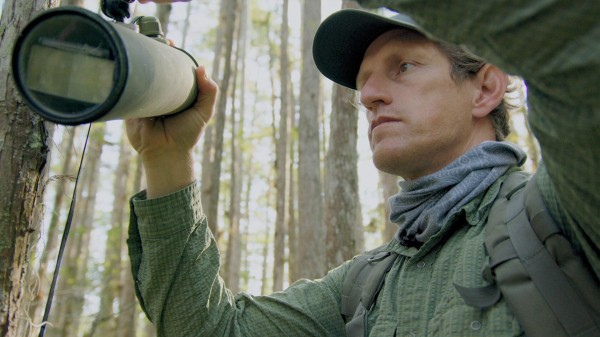
CARLTON WARD JR. IN PATH OF THE PANTHER
Last edited by Chris Knipp; 09-23-2022 at 08:12 PM.
-
WE DREAM OF ROBOTS/SOÑAR ROBOTS (Pablo Casacuberta 2022)
PABLO CASACUBERTA: WE DREAM OF ROBOTS/SOÑAR ROBOTS
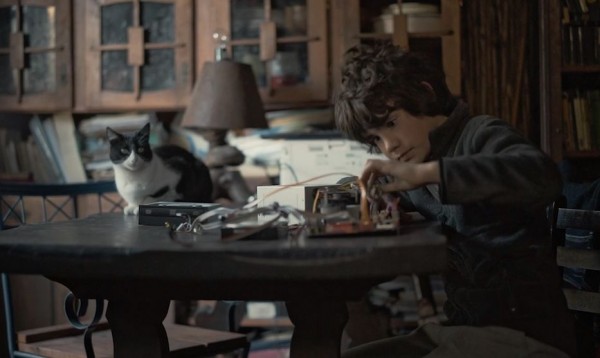
TRAILER
Uruguayan kids competing with robots form lasting bonds and inspire plans for the future - and your own mind may be blown
This delightful documentary is about hope, progress, and the future. It is in chapters. It first introduces us to some of the young people. Some of them appear mere children - fifth graders often vary in size - but when they start to talk, they are brilliant. The fascinating thing is that they are from obscure towns, some mere villages, in remote parts of Uruguay, a country that borders on Argentina and Brazil, but is much smaller and less noticed. One of them travels four hours each way to go to school. He reminded me of the young winner of an annual oratory contest in France in the inspiring 2017 doc Speak Up/À voix haute: La force de la parole, who also traveled hours to and from school. We Dream of Robots is a beautiful and well made film, visually a delight, especially the early parts, and it has a beautiful heart.
Sometimes hardship inspires. Maybe not having the internet, as is the case for many of these kids, can be an advantage, and not having a smart phone, also the case for some, makes you rely on yourself, and think. When these kids get together, the level of talk is impressive. They're thinkers. They could interview Noam Chomsky. The burden of this film is that the worldwide exploration of robotics by young people, and the big international competition held for the first time in Latin America, which two teams of the Uruguayan kids attend competing against 70 teams from all over the world, and which is the penultimate chapter - with one of the Uruguayan teams coming in third - inspires thinking about science, and about progress, and solving real problems, big ones.
One boy recounts that the young people in his area had been experiencing an epidemic of psychological issues (This has been widespread in the US too - why? The stresses of the world can't be escaped, even sans internet.) Kids were cutting themselves right and left, he says, and there were teen suicides: but the joint involvement in robots changed that. It created community, it gave the young people a new lease on life, and the general mood improved, the self-harm ended.
A "robot" is a gadget, a block of lego shapes - that runs around on a maze. It goes over obstacles. It raises and lowers things. It stays within limits. It can have any shape you want. Working on robots, these scientifically gifted kids conceive of all kinds of solutions, like developing environmentally safe transportation, like clean power, like carrying automation further in industrial supply and shipping so people can focus on the higher level technical problems. Robotics is an entry into the whole world of computer animation and design. As one bright kid says, "Everything is interconnected."
The age level for the international convention-contest is 9-16. Mathematical and to some extent scientific talent can come early, like musical talent, one of the reasons why one of the leading team members ultimately is a little guy, and why this film is so exciting and inspiring.
It's nice to see something upbeat. But apart from the remote, hardscrabble, agrarian envononments these kids mostly come from, the contest is extremely stressful. Part of the contest is exchanging your robot with another contestant's, learning to operate it, competing using the other person's technology. This is very challenging, as well as a last minute change in the ground rules of the game, and obviously teaches teamwork and quick thinking and improvisation. But it's also all very intense and nerve-wracking, a contrast to the kids' quiet rural world in which they developed their ideas and built their systems.
And yet they succeed, and their joy is a delight to behold, the hugs and the crying. But then, heartbreak comes in the year following, when the global Covid pandemic arrives, and despite the Uruguayan team's great showing and the third place for one of them, the competitions are shut down for two years! They go from joy and new self-worth to devastating disappointment.
But they're kids, they are tough and adaptable. The sparse rural environments and long commutes made them tough. The final chapter is therefore a story of compromise and regrouping and hope. The Uruguayan kids on the winning team know that this success in the international competition is the stuff that lifelong friendships are made of. The other Uruguayan youths decide they enjoyed meeting and working together so much they want to go on meeting, and, doing so, they discuss and work on all sorts of new things. Ultimately, they realize their experience and their conversations have changed them - even for some like one outspoken girl who has decided not to go into science but into arts - and that continuing with the international competitions isn't necessary because their lives and outlook have already been changed forever. This is a film for Uruguayans, where it was shown in movie theaters, that revolutionizes their self-concept and above all their notion that the people of the interior of the country are backward or limited and without potential. Not so.
It is nice to see a documentary that is so positive. The kids are absolutely charming, vibrant, impressively smart, and cute. Good for ages 10+, I Dream of Robots is in Spanish with English subtitles. This title is also available via streaming and it the North American Premiere.
Pablo Casacuberta, who was born in Montevideo, Uruguay, is not only a filmmaker but a writer and visual artist. He has long been a fiction writer and has won Uruguayan National Literature Prize and having trained as an artist in Sheffield, he exhibited in New York, Barcelona, Buenos Aires, Yokohama, and Venice. In film/video he started as a producer of Alberto Cuaron's Children of Men in 2006. He was a crew member of Terrence Malick on Knight of Cups in 2015 and worked on the TV documentary series "Tu Casa Es Mi Casa " (2021). In We Dream of Robots, he struck documentary gold.
We Dream of Robots/Soñar Robots, 85 mins., was screened for this review as part of MVFF45, the Mill Valley Film Festival. It has been showing in multiple venues in Uruguay but it is not included in his filmography on IMDb yet.
Last edited by Chris Knipp; 09-28-2022 at 12:19 AM.
 Posting Permissions
Posting Permissions
- You may not post new threads
- You may not post replies
- You may not post attachments
- You may not edit your posts
-
Forum Rules



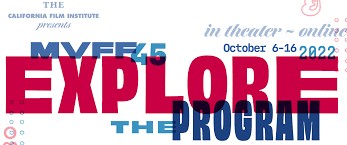

 Reply With Quote
Reply With Quote






Bookmarks